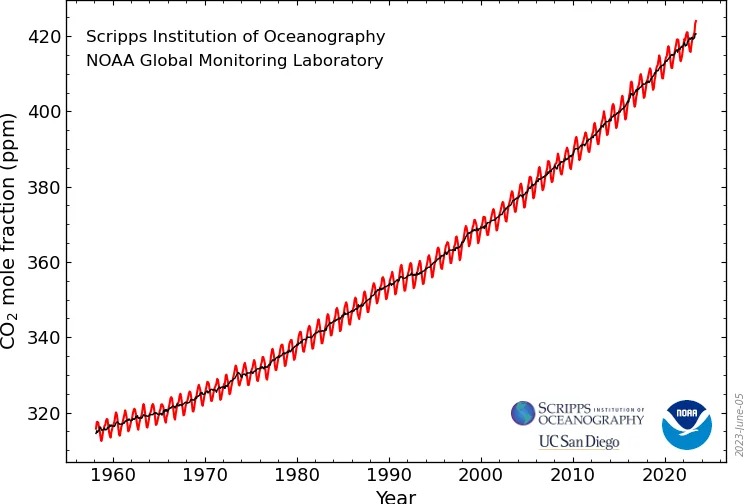Atmospheric CO2 concentrations reach 424 ppm
5 June 2023
Carbon dioxide levels measured at the US National Oceanic and Atmospheric Administration’s (NOAA) Mauna Loa Atmospheric Baseline Observatory peaked at 424 ppm in May, continuing a steady climb further into territory not seen for millions of years, scientists from NOAA and Scripps Institution of Oceanography at the University of California San Diego announced today.
Measurements of carbon dioxide (CO2) obtained by NOAA’s Global Monitoring Laboratory averaged 424.0 ppm in May, the month when CO2 peaks in the Northern Hemisphere. That is an increase of 3.0 ppm over May 2022, and represents the fourth-largest annual increase in the peak of the Keeling Curve in NOAA’s record. Scientists at Scripps, which maintains an independent record, calculated a May monthly average of 423.78 ppm, also a 3.0 ppm increase over their May 2022 average.

Carbon dioxide levels are now more than 50% higher than they were before the onset of the industrial era. Prior to 1800, atmospheric CO2 averaged about 280 ppm.
The Mauna Loa observatory has measured atmospheric CO2 since 1958, when the level was less than 320 ppm. Since then, CO2 levels have shown a steady increase, which was not even interrupted by the Covid-19 economic lockdowns. The last time the planet experienced such a sustained CO2 increase was between 17,000 and 11,000 years ago, when CO2 levels increased by 80 ppm. Today’s rate of increase is 200 times faster, according to NOAA.
The increase in atmospheric CO2 is attributed to human activities such as burning fossil fuels for transportation and electrical generation, cement manufacturing, deforestation of the planet, and agriculture.
Source: NOAA